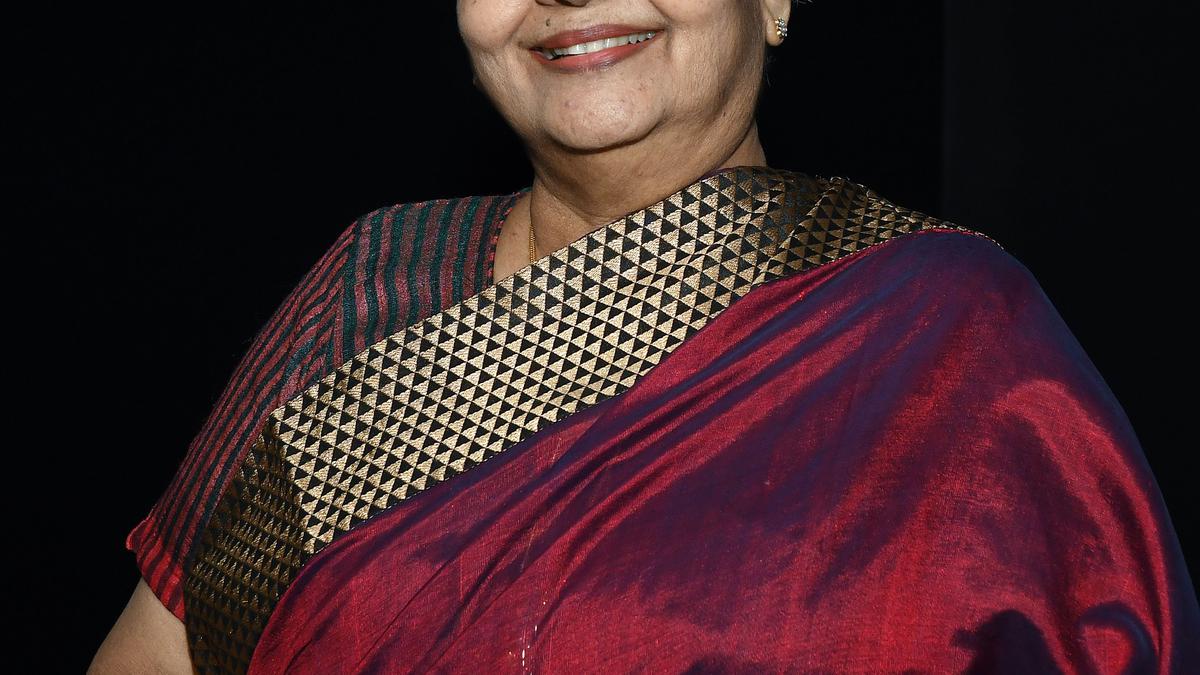
How Bombay Gnanam has carved niche in the male-dominated Tamil theatre
The Hindu
Bombay Gnanam’s tryst with Tamil theatre
In the late eighties, when theatre groups in the country were mostly led by men, Bombay Gnanam successfully broke the glass ceiling to lead a drama troupe. . She scripted history by starting the Mahalakshmi Ladies Drama Group (MLDG), an all-women team that redefined Tamil theatre. Its plays, especially on social themes, received overwhelming response from the audience. T
On the eve of the 25th anniversary of MLDG, Gnanam chanced upon the remarkable life story of Bodhendral, a 17th century saint through a discourse by Hariji, son and disciple of Krishna Premi Swamigal. This made her want to explore religious themes. Her late husband Balasubramaniam encouraged her to do the same. And thus began her tryst with dramas on saints and gurus.
Gnanam feels that every great spiritual personality in India represents high values that are universal and beyond one’s faith. “ The younger generation asks questions and that is most welcome as many of these saints also asked questions and obtained clear answers on their journey,” she says. Thorough research is Gnanam’s greatest strength and the authenticity of every main character can be vouched from the fact that she consults multiple sources. “For the play Bhaja Govindam, which depicts the life of Adi Shankaracharya, we referred books written by Ra Ganapathy and Nochur Swami. We also regularly seek the guidance of learned scholars,” says the veteran.
Supporting weavers and artisans across India is also one of Gnanam’s missions. Nativity in terms of costumes, set design and music is given prominence in her plays. For instance, in Shirdi Sai Baba every piece of jewellery worn by the Marathi women characters such as the nath, haar and chinchpeti were sourced directly from Maharashtra. For Ramakrishna Paramahamsa, Gnanam procured Bengal cotton sarees. For recreating Kolkata’s famous Dakshineshwar Kali temple on stage, Gnanam and her team of set designers visited the temple . Music is an integral part of her presentation and Gnanam and her music team leave no stone unturned to make it a worthwhile experience for the audience. For Bhakta Jayadevar, the play’s music composers faithfully reproduced the Gita Govinda, composed specifically for the worship of Jagannatha at the Puri temple, by using appropriate instrumental interludes .
Being one of the first women directors and writers, when asked about the challenges she faced as a woman in the field, she explains that her cast comprises women of all ages and from different walks of life. Also, not all of them come from a theatre background but are trained rigorously by Gnanam. Auditions take place to select those who express their interest to join the troupe. For all her dramas, Gnanam uses audio tracks where the dialogue, music and background sound are pre-recorded. Several rounds of rehearsals take place where the cast is taught to mime to the audio recordings. “In a live play when the actors deliver dialogue, the control rests with them. However, miming to pre-recorded audio tracks can go wrong easily and that is why I ask my cast to repeatedly listen to their portion until they perfect the pauses and gaps.”
Being a veteran theatre artiste, Gnanam’s thoughts on the issues ailing Tamil theatre today are extremely relevant. “There are many important elements that make a play successful. Story selection, screenplay, dialogue delivery and scene settings play a vital role. However, many groups face financial constraints due to lack of funding and sponsorship. Sabhas in the city need to provide more support to theatre groups,” she feels.
Audiences for theatre have declined sharply in the last two decades due to the advent of television, OTT platforms and other media content.“It is hard to generate enough revenue to cover even the production costs as the constraints are plenty,” says Gnanam.











